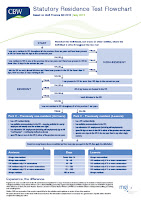I have had to explain this concept in writing more often, and over more years, than I care to remember! But I recently nailed it for a couple of lovely clients in a new way, that I hope makes it easier to follow (bearing in mind that it's not easy material!). Their business, life cover, pensions and death-in-service benefits were worth £2.38m:
For the purposes of the discussion below, I divide your estate into two types of assets, namely:
1. Assets which would be non-taxable in the estate of the first of you to die. This includes the first £325,000 of any estate (known as the “nil-band”), assets which qualify for business property relief or agricultural property relief, assets in pension schemes, or life policies written ‘in trust’. (This is wider than the strict legal definition of your ‘estate’.)
2. Assets which would be taxable in the estate of the first of you to die: i.e. everything else (especially, the house).
First Death Discretionary Trusts
The point of first-death discretionary trusts is to capture all non-taxable assets on the first death, and to cocoon those assets so that they never “belong” to the survivor of you and accordingly are not taxed on that second death, either.
Taxable assets, on the other hand, are left to the survivor of you, claiming the “spouse exemption” and therefore at least avoid being taxed on the first death (although any such assets unspent by the time of the second death will be taxed in the normal way).
In an estate where non-taxable assets are potentially a large proportion, first-death discretionary trusts can ultimately save a huge amount: 40% of the value of the non-taxable assets amounts to (40%x2,380,000=) £952,000.
The non-tax advantage of a discretionary trust is that although the assets do not “belong” to the survivor of you, those assets ARE available for the survivor to draw on, if needed.
Your Wills
The best way to establish a first death discretionary trust is in your will itself. This is the only way to capture the business: but other types of first death discretionary trusts are suggested below in relation to other assets.
Life Cover
It is generally unwise for people with estates over the tax threshold to hold life cover unless it is ‘in trust’. This is because assets payable directly to you are taxed as part of your tax estate, whereas assets held in trust are not. So you should get your financial adviser to get all the policies ‘written in trust’.
In addition to this “first death” saving: there is also tax to be saved by either ‘appointing’ from these trusts so that the proceeds pass to the discretionary trust in your will; or (which may be neater, if your financial adviser can arrange it) getting them written onto discretionary trusts in the first place.
I am always happy to work with financial advisers on this.
Pensions
There is an automatic first-death inheritance tax saving attached to lump-sum pension payments on death and most death-in-service benefits. However to save second death tax one of the following should be done:
a. your pensions ‘nominated’ to the discretionary trust in your wills; or
b. your pensions settled on so-called “spousal bypass trusts” (which is just a term used in the IFA industry for a first death discretionary trust of pension benefits).
Again, your financial adviser can organise, and I’m happy to assist/facilitate.
Rysaffe Planning
Although first death discretionary trusts are designed to avoid the 40% “inheritance tax whammy”, they do suffer inheritance tax of their own, at rates of up to 6% on their value in excess of the nil-band, every ten years (or part thereof). There is a way of avoiding this tax, also, which is – instead of having one big discretionary trust in your will, or just a small number of them – to create a string of discretionary trusts on different days. These are funded with just £10 each, but at your later death each takes funding of about £300,000 – either from your will or from a life policy or pension scheme. The advantage is that each trust is worth less than the nil-band at the outset, so its ten-year charges should be nil, or very small.
